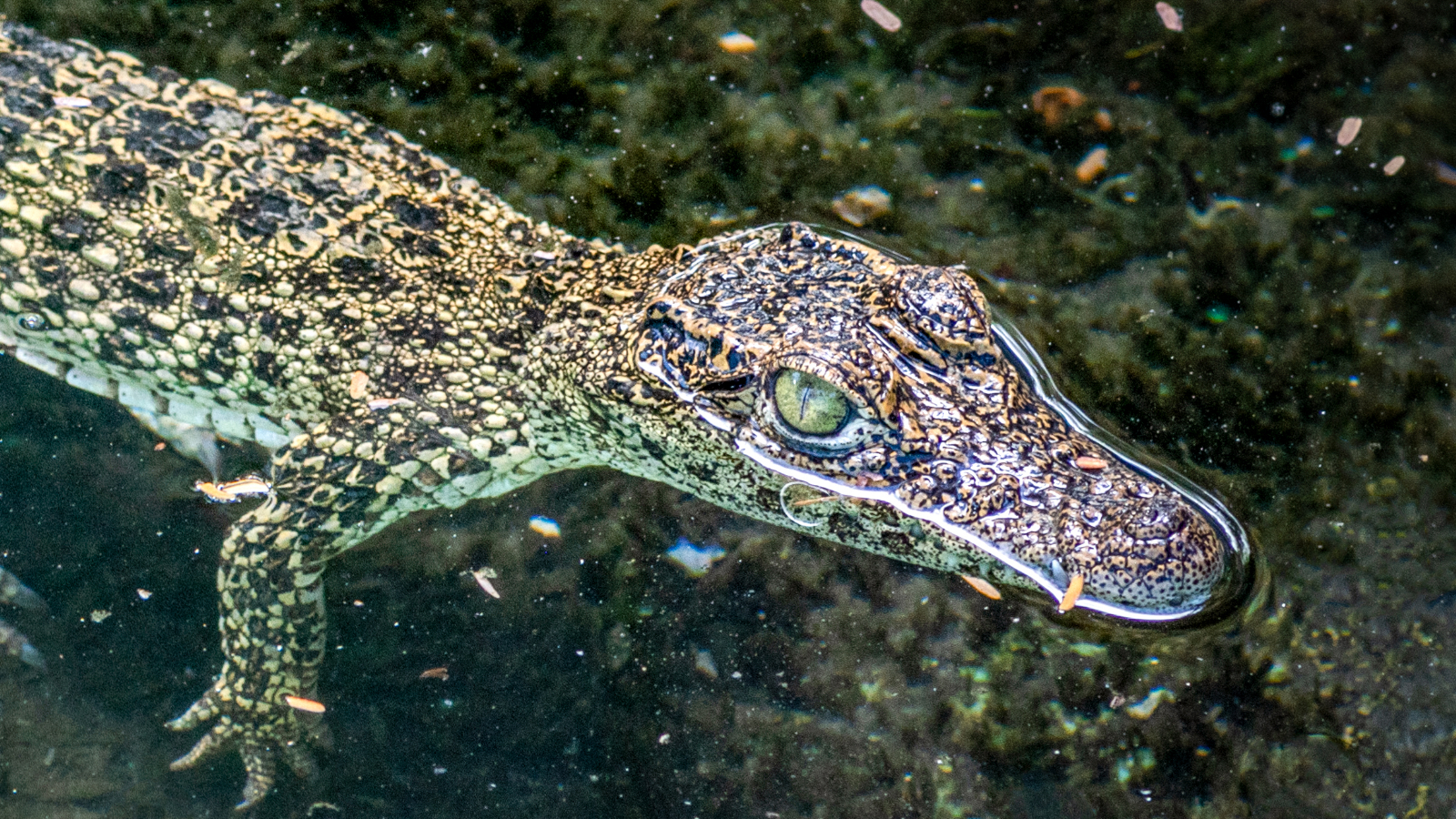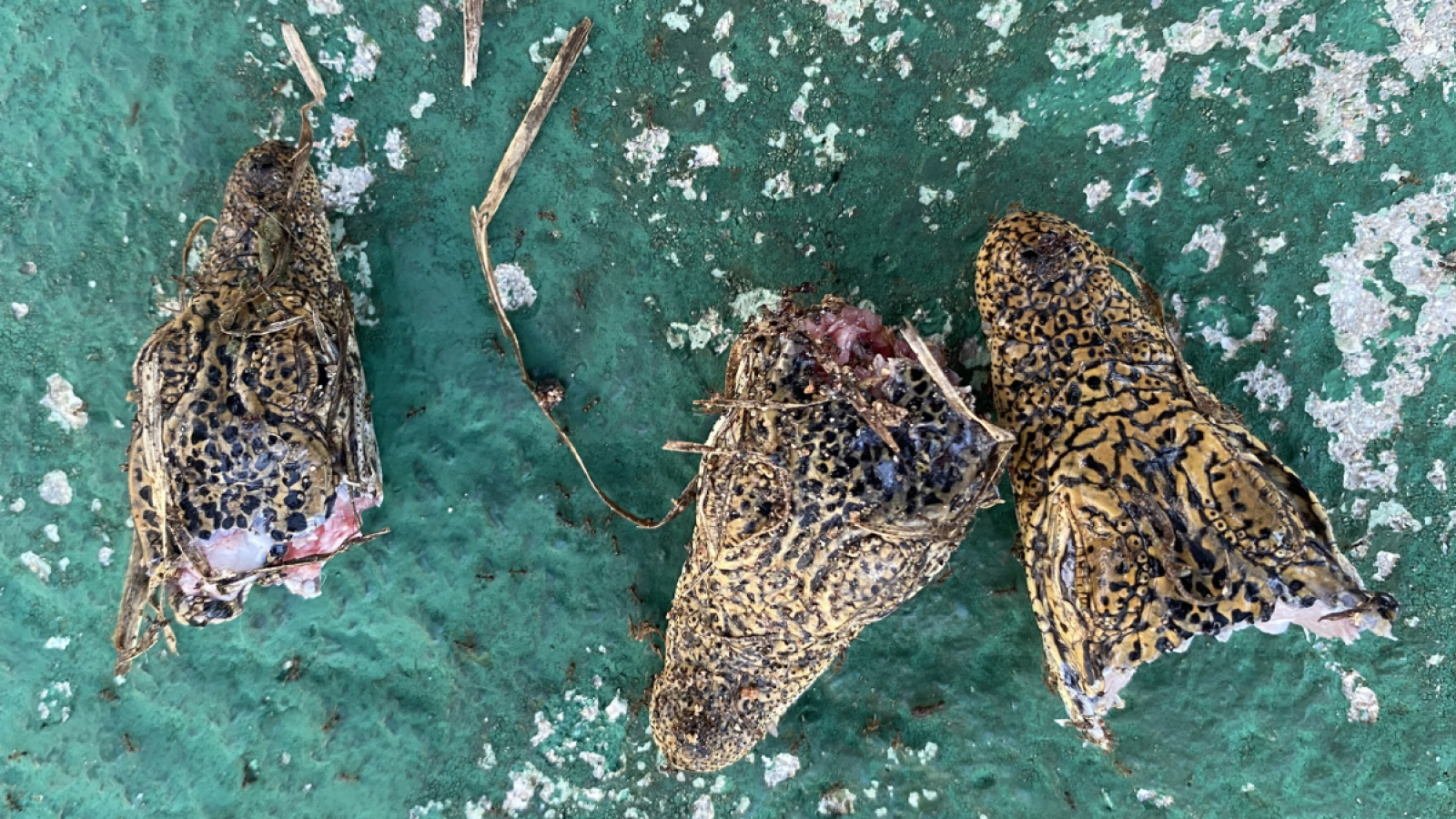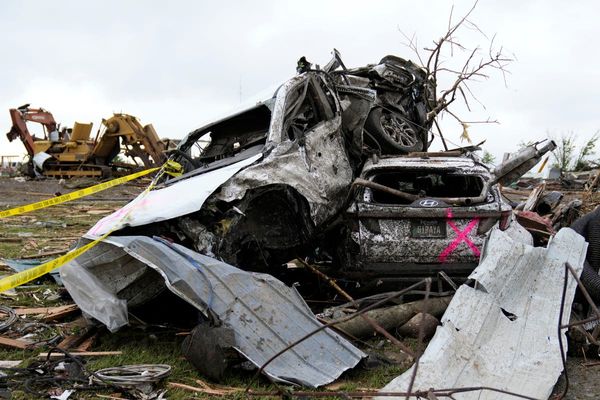
Feral cats were killing and eating baby crocodiles in Cuba, new evidence suggests.
That's troubling because the Cuban crocodile (Crocodylus rhombifer) is a critically endangered species that lives only in Cuba's Zapata and Lanier swamps.
Several characteristics distinguish the Cuban crocodile from other New World crocodile species, including bony ridges behind the eyes; an unusually curious, aggressive temperament; and the ability to leap high out of the water, according to George Amato, director emeritus of the American Museum of Natural History's Institute for Comparative Genomics and an expert on Cuban crocodiles.
The Cuban crocodile represents "a very old evolutionary lineage" and plays an important role in its native ecosystem, Amato told Live Science. He has been working with the species since the 1990s.
Related: How are alligators and crocodiles different?
Only around 3,000 Cuban crocodiles are estimated to remain in the wild, so humans are trying to increase the population. Every year, the Zapata Swamp Crocodile Breeding Farm, the world's largest Cuban crocodile breeding operation, releases some 500 Cuban crocs into the swamp, in the hopes that they'll flourish and reproduce, Etiam Pérez-Fleitas, a biologist who's affiliated with the farm, told Live Science in an email.
From October to November 2022, the farm, which Pérez-Fleitas said manages around 4,500 Cuban crocodiles today, suffered a series of predatory attacks that killed 145 4-month-old crocs, according to an article published online April 19 in the journal Herpetology Notes. In the article, co-authors Pérez-Fleitas and Gustavo Sosa-Rodriguez described evidence that feral cats were responsible for the attacks.
"I would say this is the first time that I'm aware of that there is a suggestion that feral cats might be a problem for crocodilians," said Amato, who was not involved with the new research.

The clues that cats were responsible include suspicious markings and fur recovered in the vicinity. Camera traps also recorded at least one cat entering the crocodile pens. And on one occasion, farm staff witnessed several cats feeding on something nearby. When they went to investigate, they found "fragments of crocodiles," according to the article. What's more, the attacks stopped a month after seven feral cats were captured and removed from the area.
“We did not get evidence of other predators present in these enclosures,” Pérez-Fleitas said.
Both Amato and Pérez-Fleitas told Live Science they do not believe feral cats represent an existential threat to the Cuban crocodile, with Amato citing the artificial conditions under which the attacks occurred. After all, he pointed out, young crocodiles are not penned in large numbers in enclosed areas in the wild as they are on the farm.
Instead, Amato said, the findings underscore that free-roaming cats can wreak havoc on environments into which they are introduced.

"Feral cats clearly have a significant impact on wild populations — more so than I think people thought," Amato said. "And it's not even just feral cats. It's pet cats that, you know, also are outside."
Ranked No. 38 on a list of 100 of the "world's worst invasive alien species," free-roaming cats are estimated to kill billions of birds and mammals in the United States annually and have been implicated in a number of extinctions worldwide. In response to the resulting damage to native ecosystems, some organizations and governments have adopted controversial mitigation measures, including trapping, shooting and poisoning.
Related: Feral cats in Australia sentenced to death by sausage
In light of the attacks, Pérez-Fleitas said he and his colleagues are "monitoring areas where Cuban crocodile populations exist to estimate the size of the feral cat population, if they exist in those locations."
If the populations are small enough, sterilizing the male cats may be sufficient to protect the crocodiles, Pérez-Fleitas said.
However, "In places where populations were abundant," he added, "unfortunately our recommendation will be to use lethal methods to reduce their effective size and then sterilize."







